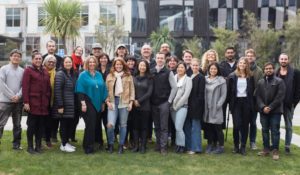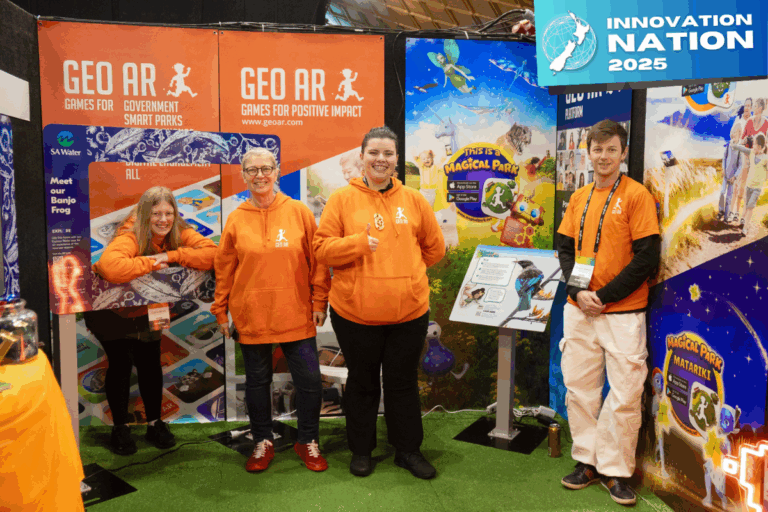
The Covid-19 pandemic has been a huge catalyst for change. Overnight borders closed, markets disappeared, and at Level Four, the majority of businesses, closed.
In Hawke’s Bay, up until March, many businesses were operating comfortably, enjoying the benefits of high consumer confidence, strong primary sector performance and a ten-year low in unemployment. Business was going along just fine, with no need to upset the apple cart.
Yet lockdown and its commercial impacts caught many businesses napping, especially in the area of digital capability. Many in Hawke’s Bay were not set up for e-commerce, let alone optimised. That meant that while bricks and mortar premises were closed, no business could be done. The demand for e-commerce support was huge, as businesses rushed to get online.
Early adopters of digital marketing and e-commerce weathered the challenges brought by Covid-19, with innovation forced on those dragging the technology chain. Covid-19 is the catalyst for change in so many areas – healthcare consultation, remote working, and meetings, to name few. It rapidly accelerated trends and new ways of working that otherwise would have taken years were truncated into a few short weeks.
Challenge always drives innovation.
Nationally, Callaghan Innovation reports that since Covid hit there has been a significant upsurge in R&D activity. Project Grant funding programmes, which is funding to undertake research, concept development, prototype development, undertaking trials etc has doubled compared to this time last year. Demand for Callaghan’s new R&D loan programme and existing programmes (R&D Experience grant student interns) have outstripped forecasts. Anecdotally, applicants are bringing a sense of urgency and buoyancy to the discussions, which is fantastic.
But it got me to thinking, and asking the question: were we too comfortable pre-Covid? Why should necessity be the mother of invention? Is it human nature to wait until change is forced upon us? And how, now that many businesses have had innovation forced upon them, can they sustain it?
The answer is an obvious “yes”. But change and innovation doesn’t come easy. To be innovative is to be creative, open to change, open to risk taking and open to discomfort. Something that many could find unpalatable.
Theodore Henderson, writing in Forbes, said: “Innovation is vital in the workplace because it gives companies an edge in penetrating markets faster and provides a better connection to developing markets, which can lead to bigger opportunities, especially in rich countries.
“It can also help develop original concepts while giving the innovator a proactive, confident attitude to take risks and get things done. Tried-and-tested methods may be reliable, but trying out new things is a worthwhile experiment.”
With Covid-19 as the innovation catalyst, let’s harness that momentum and embed innovative practices into business-as-usual, and not go back to a pre-Covid ‘cruise control’. There are sound commercial reasons for putting innovation at the heart of every business.
Global consultancy McKinsey says that riding the right waves of change, created by industry and geographic trends, is the most important contributor to business results … a company benefiting from such tailwinds is 4-8 times more likely to rise to the top of future performers.
The question of how to achieve an innovation culture remains. Does it always have to be on a grand scale? George Miller, co-founder of Mogul, and a keynote speaker at Business Hawke’s Bay’s innovation conference last year, says entrepreneurs come in all shapes and sizes, and so does innovation.
“Innovating doesn’t have to mean creating the next big industry disruptor. Micro-innovations in your business can be just as important to the economy.
“In our business, we have focused on small ongoing innovations like the automation of repetitive tasks. This has meant not only is the work more profitable, but the team has more capacity to do higher-value work.”
At Business Hawke’s Bay we believe that greater innovation and entrepreneurship will unlock Hawke’s Bay’s and New Zealand’s full potential. If we want to create a thriving national and local economy we need high-growth companies creating higher value jobs and driving productivity through innovation.
We also need to embrace the concept of “pre-competitive collaboration” and cluster groups so that sectors can work together to address barriers to recovery and harness opportunities for sustainable growth.
Most of all we need to foster innovation, and for many that means big change.
Tim Brown, CEO of IDEO, an exemplar Silicon Valley firm fully immersed in design thinking methodology, says the myth of innovation is that brilliant ideas leap fully-formed from the minds of geniuses.
“The reality is that most innovations come from a process of rigorous examination through which great ideas are identified and developed before being realised as new product/service offerings and/or capabilities.”
Much has been written about how to foster innovation. In a Forbes article, Harvard Business School’s Teresa Amabile offers seven strategies for creativity that can serve as a checklist for leaders who want to create a culture of where the ideas flow.
- Clear goal setting – but with autonomy on how to get there.
- Work assignments that match the individual’s interests and provide positive challenge.
- Open communication systems that facilitate idea exchange, co-ordination and collaboration.
- Feedback that is frequent, constructive, and supportive.
- Equitable and generous rewards and recognition. If you desire innovative behaviour, you must reward it.
- Absence of unnecessary bureaucracy.
- Supportive collaboration.
What HBR loved about Amabile’s list is that “it doesn’t require ‘artsy’ approaches. They can be systematic and corporate – and yet, when they’re in place, they make the magic of creativity happen.”
So come on, Hawke’s Bay. Let’s keep the innovation going. Let’s make innovation an everyday practice.
It doesn’t have to be big, and it doesn’t have to happen in a Eureka! moment. Innovation builds better products and services, better customer and user experiences, and stronger, more resilient businesses. Take the initiative now and don’t let necessity be the mother of your invention.
Carolyn Neville is CEO at Business Hawke’s Bay. First published in Bay Buzz.








